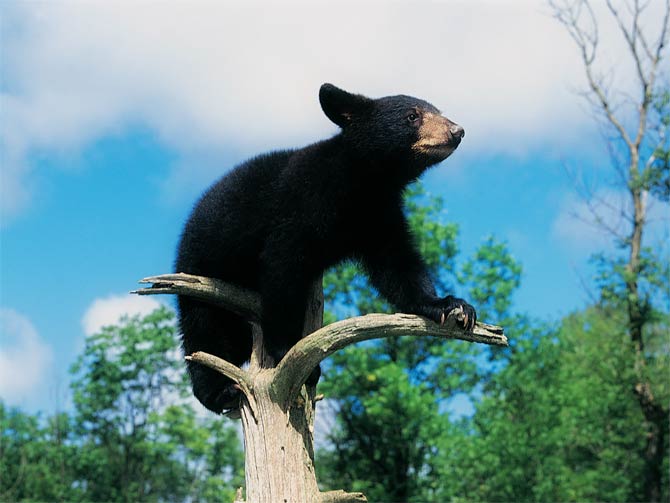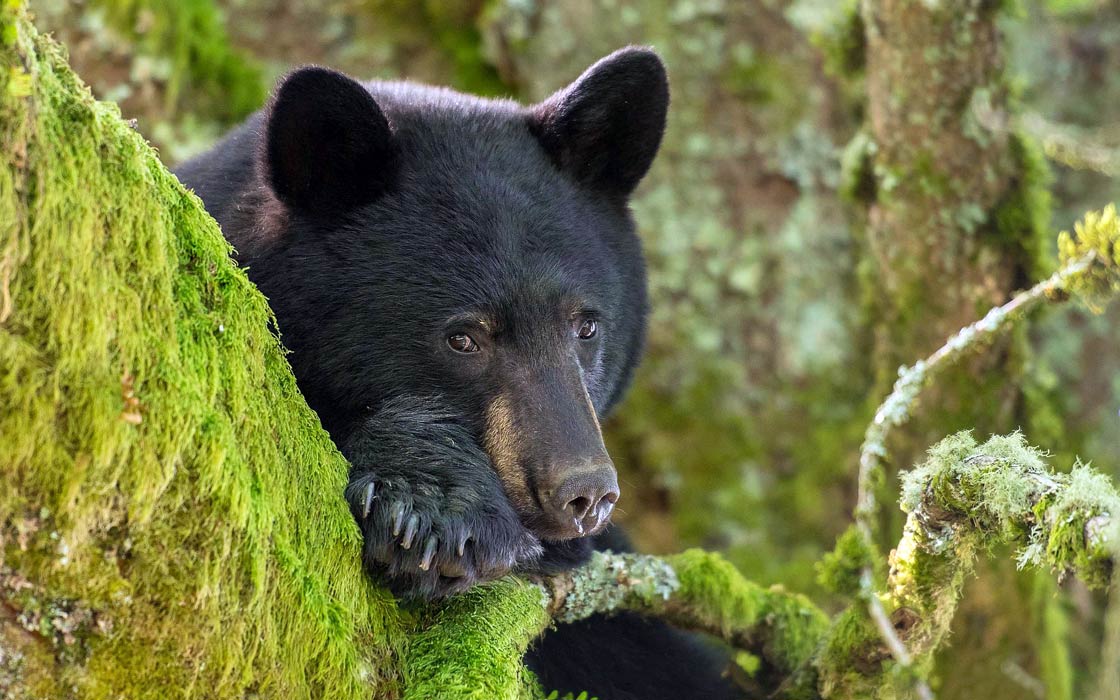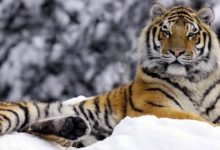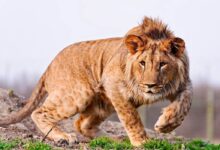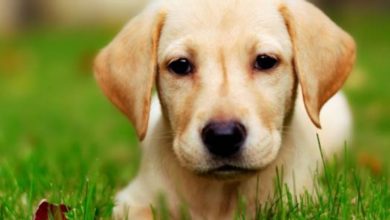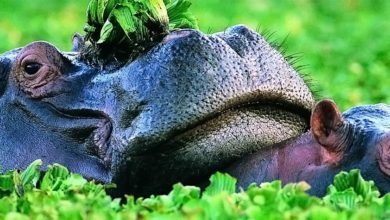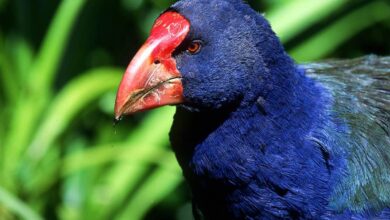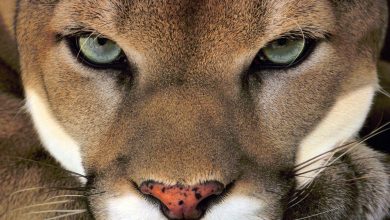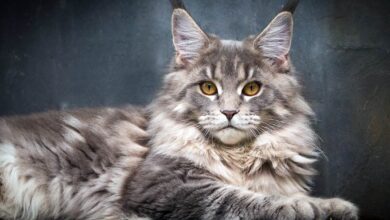American black bear – the most common bear in North America
Within the species, there are 16 subspecies that inhabit only North America and the islands belonging to it. Smaller than a grizzly bear, it sometimes falls victim to it. The closest cousin of the Himalayan black bear (Ursus thibetanus laniger) and one of the most recognizable representatives of the Ursus genus.
Classification
- Kingdom: Animalia
- Phylum: Chordata
- Class: Mammalia
- Order: Carnivora
- Family: Ursidae
- Genus: Ursus
- Species: Ursus americanus

Subspecies
There are 6 subspecies of the American black bear, which differ in size and area of occurrence:
- Ursus americanus altifrontalis
- Ursus americanus amblyceps
- Ursus americanus americanus
- Ursus americanus californiensis
- Ursus americanus carlottae
- Ursus americanus cinnamomum
- Ursus americanus emmonsii
- Ursus americanus eremicus
- Ursus americanus floridanus
- Ursus americanus hamiltoni
- Ursus americanus kermodei
- Ursus americanus luteolus
- Ursus americanus machetes
- Ursus americanus perniger
- Ursus americanus pugnax
- Ursus americanus vancouveri

Areas of occurrence
North American species – the most widespread representative of bears on the continent. Usually it lives in wooded areas, but can go beyond woodland in search of food. Sometimes, attracted by the ease of getting food, it appears close to areas inhabited by humans.
It prefers inaccessible areas, densely forested, mountainous, in which there is no shortage of food (especially young conifers). It is most abundant away from humans, but it can adapt to suburban conditions rich in vegetation. Usually it lives at an altitude of 400 to 3,000 m (1,300 to 9,800 ft) above sea level.
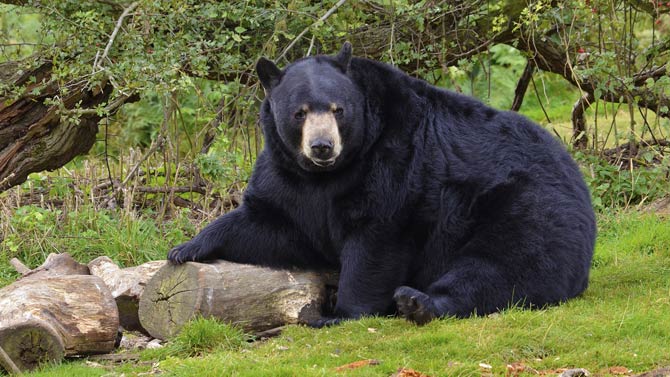
Characteristic
Appearance
Females have more slender and pointed snouts than males. Nails are black or gray-brown, short, rounded, widest at the base, tapering towards the tip. They have a similar length on the front and hind legs, but on the front legs they are more clearly curved. The sole of the feet is heavily wrinkled, naked, brown or black in color. The ears are small, rounded, located on the sides of the head. The bear moves rhythmically, but it can accelerate to 40-50 km/h (25 – 31 mph).
Soft fur, with a thick undercoat and long, thick topcoat hair. The coat is not as shaggy and coarse as that of a grizzly bear (Ursus arctos horribilis), but it serves its purpose well. American black bear is a close cousin of the Asian black bear (Ursus thibetanus), both have similar fur color, but the moon bear has a white patch on the chest and more rounded ears. Despite its alternative name (black bear), the American black bear shows a great variety of colors.
You can meet white, cinnamon, light brown, chocolate and “mixtures” individuals. Black bears with a bluish glare are found along the coast of Alaska and British Columbia. White or cream individuals are found on coastal islands. The darkest American black bears were spotted in the wettest areas (New England, Tennessee, Michigan, and West Washington). Light brown American black bears may be mistaken for grizzly bears, but they do not have the hump of gray bears. The American black bear’s profile is more concave, moreover, it is much smaller than the grizzly bear.
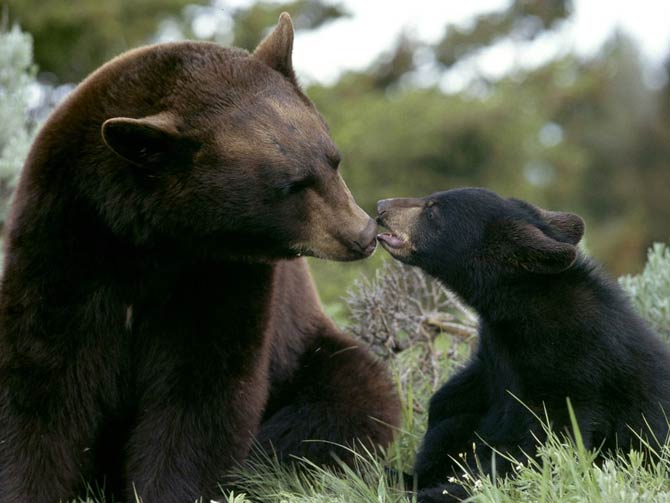
Lifestyle and diet
It is most active at dusk, although the feeding time is not strictly observed. Most of the diet is plants. After hibernating, it prefers meat, especially carrion and young ungulates. In the spring, it looks for fresh plant shoots (grasses, water plants). In addition, it eagerly eats the spring buds of flowers and shrubs, which help strengthen muscles and the skeleton after a long hibernation. In summer, the diet consists mainly of fruit, especially berries.
In the fall, in the period before falling asleep, she spends most of her time eating. The most important items on the menu are tree bark, acorns, hazelnuts, and pine cones of the Pinus albicaulis species. Individuals that stay close to people take the opportunity to eat something from the garbage can, as well as bird food, crops and honey.
It eats insects (bees, wasps, ants and their larvae). Often she will scrape honeycombs from natural hives without fear of being stung. American black bears from the Pacific coast hunt salmon at night because their black fur can be spotted by the fish during the day. It will also not disdain fish from the Catostomidae family, trout or catfish.
Although it is not known for actively hunting larger animals it does happen that its prey includes young moose (in Idaho and Alaska), adult white-tailed deer and mule deer (Odocoileus hemionus). It hunts by surprise. It is easiest for it to kill the sick and young animals it has noticed in the herd. It prefers to eat alone. If it fails to consume everything at once, it hides carrion among the brush, but this is a rather rare occurrence among American black bears.
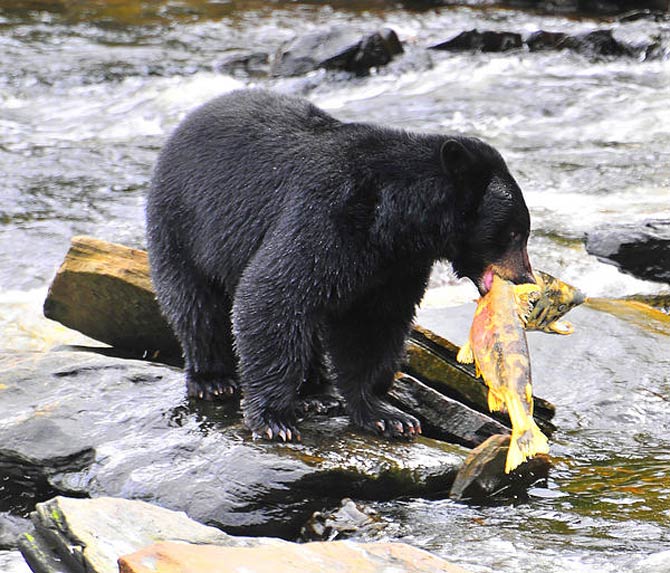
Character, natural enemies
There are 20 different American black bear sounds, including growls, roars, and snorts when angry, while squeaks and purrs when satisfied.
It is highly territorial and not very social, but when there is a large amount of food in a given area, American black bears live in less related hierarchical structures. Dominant males occupy the richest areas in food. It marks the territory by rubbing and biting the bark. The size of the area depends on the region.
The American black bear swims very well; it does this not only for food but also for pleasure. It leads a rather arboreal lifestyle, similar to a lunar bear. Climbing skills decline with age and weight gain. It is active at any time of the day, but usually functions after dark.
In addition to the rare confrontations with grizzlies and wolves, the American black bear does not need to worry about the dangers of aggressive behavior or the predatory disposition of other animals. Bear cubs are in a worse situation, becoming easy prey for puma, lynx, wolf, coyote, brown bear or adult American black bear.
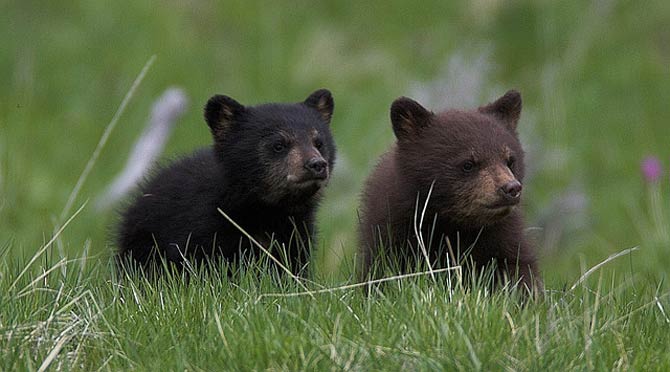
Hibernation
In the past, it was believed that the American black bear did not fall into deep hibernation, but after long observations and research, the theory was refuted.
The American black bear can sleep for a month without providing the body with food or drink, without urinating or defecating. This proves a clearly slowed-down metabolism, thanks to which this predator can fall into winter lethargy without any health damage. It can significantly slow down the metabolism in times of poor food and at low temperatures. Today it is considered one of the bears best adapted to hibernation.
It creates (or finds) lair in October and November. This function is usually performed by empty tree trunks, caves, shallow depressions in the ground. Before this period, the American black bear gains an additional 14 kg (30 lb) of body fat. Hibernation lasts 3-5 months, during which the heart rate drops from 40-50 beats per minute to 8 beats. After waking up, the bear leaves the lair and roams the territory for about 2 weeks for the metabolism to accelerate and adjust to active functioning.
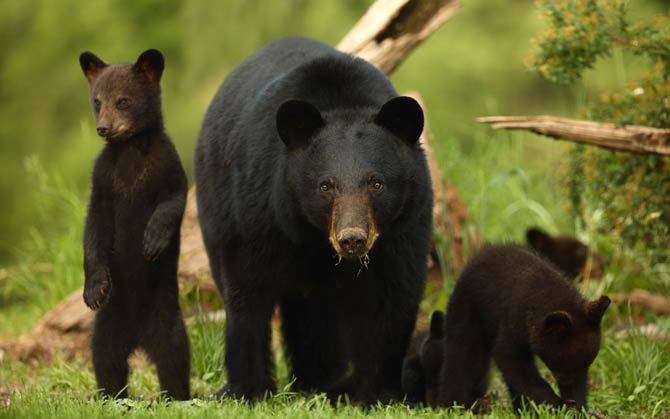
Reproduction
The female gives birth for the first time between the ages of 3 and 5. The breeding season usually lasts from June to July, although individuals from the north mate until August. Both genders are polygamists. Males mate with several females. After copulation, the couple stays together for a very short time. The fertilized egg does not implant in the uterus immediately after fertilization, it takes place before hibernation – in November.
Gestation lasts 235 days, so the young are born in late January or early February. In one litter, 2 cubs are usually born, but there may be a group of 6 bears. After birth, they weigh 280 – 450 g and are approx. 20 cm (8 in) long, covered with gray down. They open their eyes after 28-40 days and take their first steps after about 5 weeks. They consume milk for about 30 weeks.
After six months, they weigh from 18 to 27 kg (40 to 60 lb), and they reach their final size after about 5 years. They become independent from their mother after 16-18 months, become sexually mature at around 3 years of age.
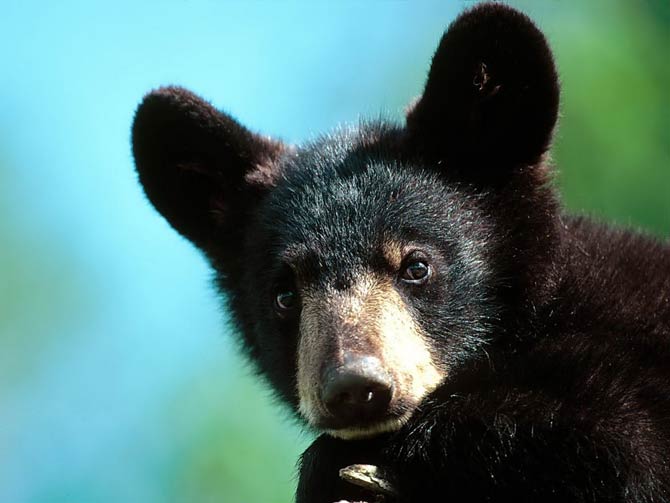
Detailed data / dimensions (size)
American black bear (Ursus americanus)
- Length: 120 – 200 cm (47 – 79 in)
- the record bear was 241 cm (95 in) long
- Height at the withers: 70-105 cm (28 – 41 in)
- Tail length: 7.7 – 17.7 cm (3 – 7 in)
- Weight:
- females: 41 – 170 kg (90 – 375 lb)
- males: 57-250 kg (126 – 551 lb); a maximum of over 363 kg (800 lb)
- the record individual weighed almost 500 kg (1100 lb)
- females are about 33% lighter than males)
- Depending on the subspecies and areas of occurrence, the average weight varies greatly (male / female):
- in California – 86 / 58 kg (190 / 128 lb)
- in Alaska 87.3 / 63.4 kg (192 / 140 lb)
- on Kuiu Island 115 / ? kg (254 / ? lb)
- in Great Smoky Mountains National Park 112 / 47 kg (247 / 104 lb)
- in Yellowstone Park 119 / 67 kg (262 / 148 lb)
- in New York State 135 / 74 kg (298 / 163 lb)
- Lifespan:
- 18 – 23 years (maximum 31 years) in the wild
- up to 44 years in captivity

American black bear – interesting facts
- The total population in Canada is between 396,000 and 476,000. It is the most numerous bear in the world. Its population is estimated to be twice that of all other bear species combined.
- The American black bear is a very skillful creature – it can open a twisted jar, as well as open and close the door.
- It has good eyesight, can distinguish colors faster than chimpanzees, but just as quickly as domestic dogs. Quickly learns to distinguish shapes such as circles, squares and triangles.
- The American black bear can hunt an adult moose.
- In the Labrador region, American black bears are predominantly carnivores. They usually feed on caribou and carrion of small mammals. The reason for carnivorousness is probably the scarcity of edible vegetation.
